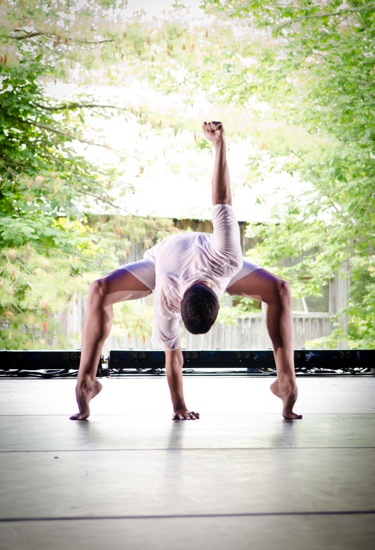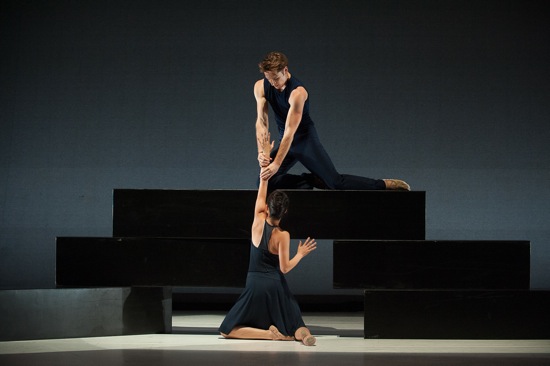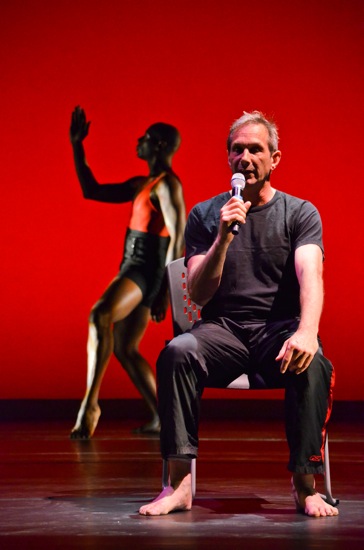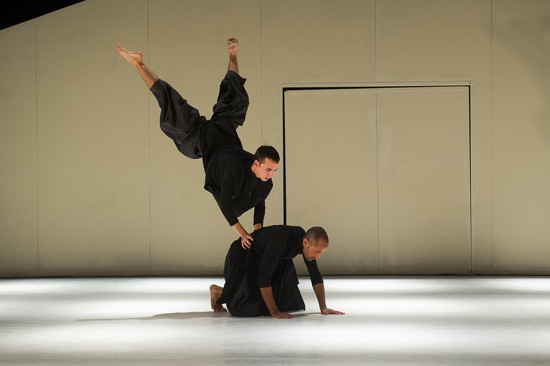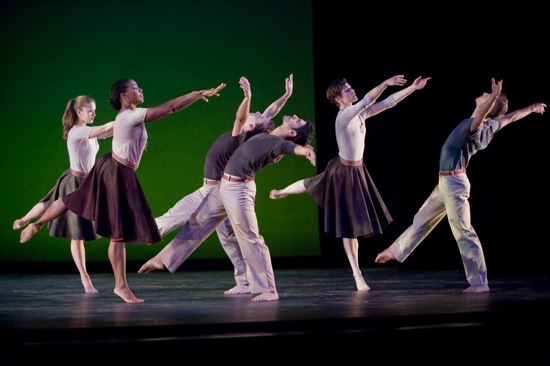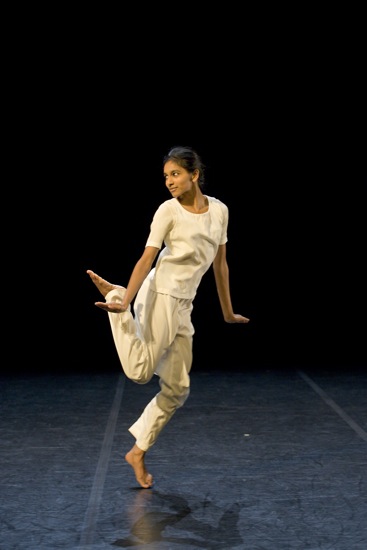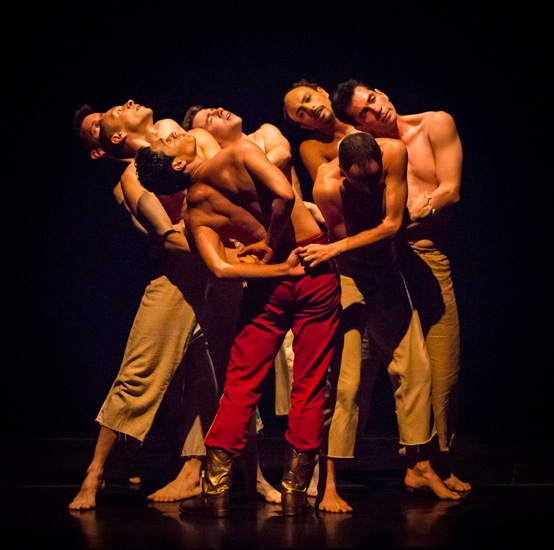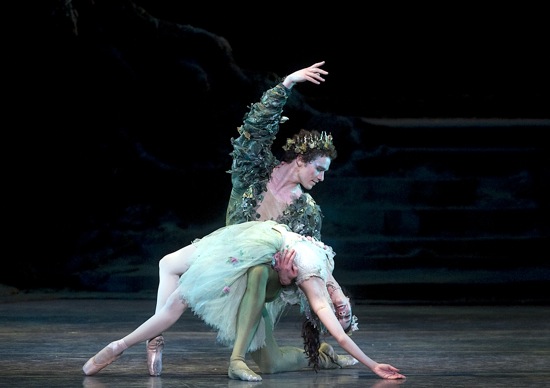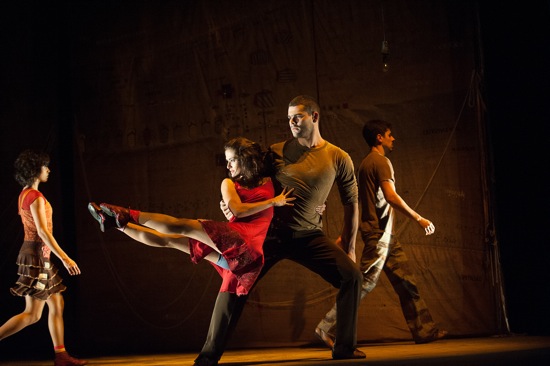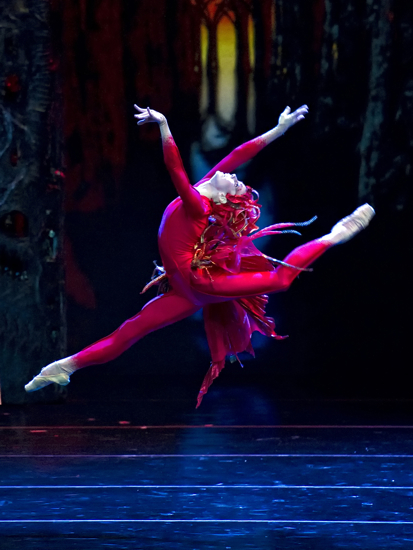The back story: Jonah Bokaer and David Hallberg were working together on a duet—the postmodern dancer-choreographer and the adventurous ballet virtuoso, the dark-haired guy and the blond one. Hallberg broke his foot shortly before the piece was to premiere at the Avignon Festival. Steps were taken. The show went on. Now I’ll shut up and talk about Curtain as it was at Jacob’s Pillow, August 1 … [Read more...]
Making Ballet New
While works of talented choreographers whose heritage is in modern dance pop up in parks, churches, lofts, barns, and theater like mushrooms after a good storm, gifted new choreographers working in the ballet idiom are rarer and therefore get a lot more attention. Remember the fuss surrounding Eliot Feld when he began choreographing in 1967 while still performing in American Ballet Theatre? … [Read more...]
Men Dancing: Then and Now
Eighty years ago, when Ted Shawn assembled the all-male company that toured the U.S. with him during the 1930s, he aimed to eradicate the notion that dancing was for sissies (the polite, if bullying term for boys whose masculinity was in doubt). Almost all of those who joined Shawn’s Men Dancers were graduates of Springfield College’s Physical Education Department, and he toughened them further in … [Read more...]
Pounding the Earth, Aspiring to the Air
Cultural identity, terrain, traditions, body types, beliefs. How many other markers reveal how we like to move, how we define dance? Two very dissimilar styles appeared last week some miles north of New York City in pastoral surroundings. Israel’s Vertigo Dance Company performed in Jacob’s Pillow’s Ted Shawn Theater July 4 through 8, and on July 6, France’s Compagnie Fêtes galantes opened Bard’s … [Read more...]
Midsummer, Music, Morris
In 1931, Noël Coward walked out of the first public performance of William Walton’s Façade: An Entertainment in 1923, and a critic described the music for flute, clarinet, trumpet, saxophone, cello, and percussion as “relentless cacophony.” Coward may have been put off by the fact that Edith Sitwell, the author of the poems that formed Walton’s libretto, sat behind a screen and read … [Read more...]
A Single Dance in Four Chapters
Shantala Shivalingappa has always been an artistic voyager. Trained in India’s classical Kuchipudi style (first by her mother, Savitry Nair, then by Vempati Chinna Satyam), she danced with an unbridled white horse in Bartabas’s equine spectacle Chimère. She played Ophelia in Peter Brooks’s production of Shakespeare’s Hamlet and Miranda in his The Tempest. She has performed with Pina Bausch’s … [Read more...]
Looking Back, Forging Ahead
A man in a fancy military jacket—gold epaulettes and all—sits slumped on an outsized throne. Six men creep in warily, circle him, bow mockingly, jump about, seem to confer. The man doesn’t move. This is how José Limón’s The Emperor Jones begins. Limón choreographed the dance, based on Eugene O’Neill’s play of the same, in 1956, to a turbulent commissioned score by Heitor Villa-Lobos. The décor and … [Read more...]
Astray in Summer Dreams
If you can’t see a production of Shakespeare’s play A Midsummer Night’s Dream in a woodland setting during a long June twilight, as I once did, you can be enthralled by a different sort of magic conjured up by the Bard’s plot. George Balanchine’s 1962 ballet of the same name ended its week in the New York City Ballet’s season before American Ballet Theatre hit the solstice dead on with Frederick … [Read more...]
My Hand, Your Head, Por Favor
The man leads. Right? In the social and ballroom dances of Europe and the Americas, the man always leads. Still, when you watch couples who are adept at, say, the Argentinian tango or the Viennese waltz, the man and his partner seem so bonded that you can envision them as complicit equals. Never mind that his right hand pressing on her back and his left arm pulling at her right arm are guiding … [Read more...]
Flaming Magic and Goofy Girls
One of the most surprising things about American Ballet Theatre’s new Firebird is how Russian it isn’t. When Serge Diaghilev commissioned 27-year-old Igor Stravinsky to write his first ballet score, one of the impresario’s continuing aims was to acquaint Paris with Russian music and culture. L’Oiseau de Feu premiered in 1910 with a wandering Tsarevitch as its hero and a magic bird as its … [Read more...]

